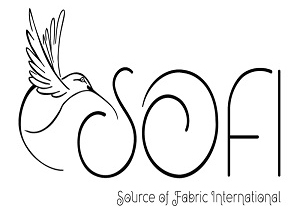One of the most popular textiles in the world, cotton is prized for its natural origins, comfort, and adaptability. From clothing to home textiles, understanding cotton fabric can help you make informed decisions about its use and care. In this article, we delve into seven crucial insights about cotton fabric, providing you with a comprehensive understanding of this essential material.
1. The Origin of Cotton Fabric
Understanding cotton fabric starts with its origins. Cotton is a natural fiber harvested from the cotton plant, primarily grown in warm climates. The fibers are spun into yarn, which is then woven or knitted to create fabric. The cultivation of cotton dates back thousands of years, making it one of the oldest known textiles. Today, major cotton-producing countries include the United States, China, India, and Brazil.
2. Properties of Cotton Fabric
Cotton fabric is highly valued due to its many advantageous qualities:
- Breathability: Cotton is highly breathable, allowing air to circulate and keeping the wearer cool and comfortable.
- Absorbency: It can absorb up to 27 times its weight in water, making it ideal for towels and activewear.
- Softness: Cotton feels good on the skin since it is inherently soft.
- Durability: With proper care, cotton fabric can withstand repeated washings and wear, making it a long-lasting choice for various applications.
3. Uses of Cotton Fabric
Understanding cotton fabric involves recognizing its wide range of uses. It is a staple in the fashion industry, used for making t-shirts, jeans, dresses, and undergarments. Beyond clothing, cotton is essential in home textiles such as bed sheets, towels, and curtains. Additionally, it is used in industrial applications, including medical supplies, and in products like bookbinding and coffee filters. Must Read About Discovering the Most Popular Colors of Sequin Fabric
4. Types of Cotton Fabric
Cotton fabric comes in a variety of forms, each with special qualities of its own:
- Egyptian Cotton: Known for its long fibers, Egyptian cotton is soft, durable, and luxurious, often used in high-end bedding and clothing.
- Pima Cotton: Similar to Egyptian cotton, Pima cotton has long fibers that result in a smooth, strong fabric.
- Organic Cotton: Grown without synthetic pesticides or fertilizers, organic cotton is an eco-friendly choice that supports sustainable agriculture.
- Upland Cotton: The most common type, Upland cotton has shorter fibers and is widely used in everyday apparel and textiles.
5. Benefits of Cotton Fabric
Understanding cotton fabric means appreciating its numerous benefits:
- Hypoallergenic: Cotton is gentle on the skin and unlikely to cause allergic reactions, making it suitable for sensitive skin and baby products.
- Biodegradable: Cotton is an environmentally friendly and biodegradable natural fiber.
- Versatility: Cotton’s adaptability allows it to be used in various weaves and blends, enhancing its functionality and appeal.
- Easy Care: Cotton fabrics are generally easy to care for, often machine washable and ironable.
6. Caring for Cotton Fabric
Proper care is essential for maintaining the quality of cotton fabric. Here are some tips:
- Washing: Use cold or warm water to prevent shrinking and maintain the fabric’s integrity.
- Drying: Air drying is preferable, but if using a dryer, opt for a low heat setting to avoid damage.
- Ironing: Iron cotton fabrics on a medium setting while they are slightly damp for best results.
- Storing: Store cotton fabrics in a cool, dry place to prevent mildew and discoloration.
7. The Future of Cotton Fabric
The future of cotton fabric is promising, with ongoing research and innovations aimed at enhancing its sustainability and functionality. Advances in genetic engineering are producing cotton plants that require less water and pesticides, while new dyeing techniques are reducing the environmental impact of fabric production. As consumers become more eco-conscious, the demand for organic and sustainably produced cotton is likely to increase.
For more detailed information and to explore a wide range of high-quality cotton fabrics, visit Source of Fabric International.
Conclusion
Understanding cotton fabric involves recognizing its origins, properties, uses, types, benefits, and care. This versatile and natural textile remains a staple in various industries, valued for its comfort, durability, and sustainability. By gaining a deeper understanding of cotton fabric, you can make more informed choices for your personal and professional projects.


